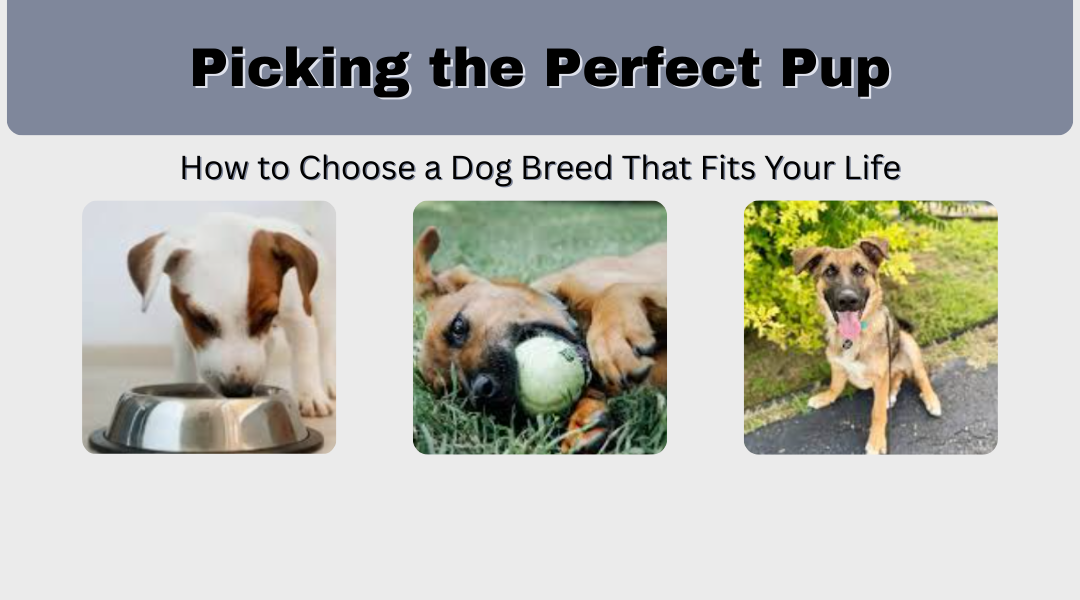Bringing a dog into your home is a big decision—one that shouldn’t be based solely on looks or trends. That fluffy Samoyed might melt your heart, but if you live in a tiny apartment with no yard, a low-energy French Bulldog could be a much better match. Similarly, while Border Collies are brilliant and athletic, they’re a nightmare for couch potatoes who can’t keep up with their endless energy.
To find your ideal four-legged companion, you’ll need to think beyond “cute” and consider practical factors like size, energy, temperament, and grooming. Let’s break it down.
1. Size Matters—More Than You Think
Dogs come in all shapes and sizes, from teacup Chihuahuas to massive Great Danes. But bigger isn’t always better—it’s about what fits your lifestyle.
- Small breeds (under 20 lbs): Ideal for apartments or small homes. Think Pomeranians, Dachshunds, or Cavalier King Charles Spaniels. They’re portable, eat less, and usually cost less at the vet. But some can be fragile or yappy, so they might not be the best choice for rough-and-tumble kids.
- Medium breeds (20-50 lbs): A happy middle ground. Breeds like Bulldogs, Cocker Spaniels, or Australian Shepherds (for active owners) adapt well to different living situations.
- Large breeds (50-100 lbs): Labs, Golden Retrievers, and German Shepherds need space to stretch their legs. They’re great for families but come with higher food bills, bigger messes, and sometimes joint issues.
- Giant breeds (100+ lbs): Newfoundlands, Mastiffs, and Saint Bernards are gentle giants—but they eat like horses, take up your entire couch, and may have shorter lifespans.
Pro tip: If you rent, check weight restrictions before falling for a big dog. Many landlords have strict rules.
2. Energy Levels: Match Your Lifestyle
A dog’s energy level can make or break your relationship. You don’t want a high-octane herding dog if you work 12-hour days, just like you shouldn’t get a lazy Basset Hound if you’re training for marathons.
- High-energy breeds: Border Collies, Jack Russell Terriers, and Siberian Huskies need hours of exercise and mental stimulation. Perfect for runners, hikers, or agility trainers.
- Moderate-energy breeds: Beagles, Spaniels, and Poodles enjoy daily walks and playtime but won’t destroy your house if they miss one.
- Low-energy breeds: Bulldogs, Greyhounds (yes, really!), and Shih Tzus are happy with short walks and lots of naps. Great for seniors or homebodies.
Don’t overlook senior dogs! They’re often calmer, already trained, and desperately need homes.
3. Temperament: Personality Is Key
Just like people, dogs have distinct personalities. Some are clingy, some are independent, and some are born to work.
- Velcro dogs: Breeds like Vizslas and Italian Greyhounds bond intensely and hate being alone. Not ideal if you’re never home.
- Independent thinkers: Shiba Inus, Chow Chows, and Afghan Hounds are more aloof. They’ll love you—on their terms.
- Working/herding breeds: Australian Shepherds, Belgian Malinois, and Cattle Dogs need a job. Without one, they’ll invent their own (usually involving shredded furniture).
Ask yourself: Do you want a shadow or a self-entertainer? A goofball or a serious protector?
4. Grooming: More Than Just Fluff
That gorgeous Afghan Hound coat? It requires daily brushing. A sleek Boxer? A quick wipe-down is enough.
- High-maintenance coats: Poodles, Old English Sheepdogs, and Komondors need professional grooming every 4-6 weeks.
- Moderate upkeep: Golden Retrievers and Collies shed a lot but don’t need fancy haircuts.
- Low-maintenance: Boston Terriers, Dalmatians, and Whippets have short coats that are easy to care for.
Allergies? Hypoallergenic breeds like Portuguese Water Dogs or Schnauzers shed less but still need regular grooming.
Your Life, Your Dog
Before choosing a breed, take a hard look at your daily routine:
- Space: No yard? Avoid breeds that need room to run.
- Schedule: Busy 24/7? A cat might be a better fit. Dogs need time and attention.
- Budget: Big dogs = big vet bills. Long-haired dogs = grooming costs.
Still unsure? Talk to shelter staff or a vet. They can help match you with a dog that fits—whether it’s a purebred or a lovable mutt.
Once you bring your new best friend home, keep them healthy with quality food, regular check-ups, and plenty of love. After all, they’re not just pets—they’re family.
